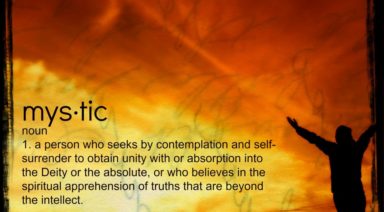Ancient wisdom of past days can also be the key to our future

Have you noticed it? Time is speeding up. Either the functions of our mind are increasing in speed so that it appears time moves faster and faster, or the events of the world are happening at a much quicker rate. There is no doubt that technological innovations are advancing at an unprecedented pace. This makes it difficult to keep up with all that the world now has to offer, day by day, let alone contemplate the implications.
Once, mankind found itself in a much simpler time. In the ancient world, things changed very little over the course of several generations. While the people of this ancient world certainly did not know as much as we do today, they had the opportunity to experiment and refine their techniques over the course of hundreds of years. These techniques included everything from spiritual connections to healing. As they did these things over and over, they set the prototype for how the mind works at an integral level including the functions of perception and how beliefs are integrated.
Over the centuries, mankind has augmented this prototype mindset. The names, mythologies, and ideologies may change from culture to culture and from time period to time period, yet we are all still human. Our brains and minds still work in the same fundamental way. The basic intention of ancient practices still remain with us today: building a sense of community, connecting with something greater than ourselves and innovating in order to survive.
As we look to the future and attempt to see what is to come, it is important to remember where we came from as a species. There is a popular Buddhist saying that goes, “If you want to know your past life, look at your present condition. If you want to know your future life, look at your present actions.” This applies just as much for the individual as it does for the whole of humanity. If we want to know why the world is in its current state, we must understand how we got here. In order to do this, we must study history and attempt to understand why the people of the past did what they did. As we do this, we can change our behaviors in order to create an even better future for generations to come. In essence, we study yesterday to live better today. This way, we can create the space for an even brighter tomorrow.
There is so much for us to learn about the ancient world and the discoveries they made. As we gain a deeper understanding of our modern world, the past innovators walk with us. Ancient guides lead us with their wisdom and inspiration, if only we learn how to listen to them. One day, when this era is considered to be an ancient world, we too will become the guides for distant future generations. They will look to us to lead them to even brighter horizons.
There is much to see atop the shoulders of giants.
View our full collection on Ancient Wisdom to continue unlocking secrets from the past.
Number of People Practicing Wicca, Paganism Growing Dramatically

The number of people who identify religiously as Wiccan has seen a meteoric rise in the United States, according to census data and a study conducted by Trinity College. Some attribute this witchy surge to an increased interest in astrology and the esoteric, while others say it’s clearly a sign of the times. Whatever the case may be, appropriation and corporate attempts to monetize the trend abound.
According to a study collected by Trinity College between 1990 and 2008, identification with Wicca in the U.S. increased from 8,000 to 340,000 members over the 18-year period.
And that trend continues today, with a 2014 Pew Research Study finding the number of people who identified as Wiccan or Pagan jumped to close to a million people. And yes, there is a difference between Wicca and Paganism, but for the sake of making a point about the demographic, let’s consider them together.
The reason the two have grown so significantly may be due to a breakdown of misconceptions about what these religions actually stand for, many of which have been falsely spread by the church in the past. Unlike the evil stereotypes that have historically been cast on witches and pagans, millennials understand these practices have a reverence for nature, are polytheistic, and averse to the strict dogmas of mainstream religions.
Wicca has no centralized, authoritative body and embraces a number of diverse sects, lineages, and traditions – of course, this generation finds it appealing.
If you haven’t heard recent claims of pop-stars practicing Wicca, or stories of hexes placed on political figures, then this sudden spike in witchcraft may come as a surprise. But for those aware, the recent occult fascination makes sense. In fact, the rise in the number of witchcraft practitioners may have outpaced certain Christian denominations, including Presbyterianism, according to some sources.
But these situations have always presented themselves as a clarion call to corporations looking to profit from a newfound lifestyle interest, leading to cultural or religious appropriation seen in tone deaf marketing and advertising.
A recent article published by Quartz, shows how the cosmetics brand Sephora, was called out for its sale of a “Starter Witch Kit,” which included essential oils and a sage stick to jumpstart the aspiring witchy neophyte. The company quickly pulled the product after true Wiccans expressed their disapproval.
And it’s not just corporations that get it wrong when it comes to esoteric spirituality. Earlier this year we interviewed a couple who run Mountain Magic Tarot in Richlands Virginia – a shop that was told it could not practice tarot readings due to a misperception that it was hostile to the town’s mostly Christian population.
It seems inevitable though, that if you’re going to practice any religion – especially one historically thought to be synonymous with evil – someone will misconstrue your philosophy. Let’s change that paradigm.
To learn more about Wicca and its philosophy check out this episode of Beyond Belief with former-rockstar-turned-witch Fiona Horne:



































